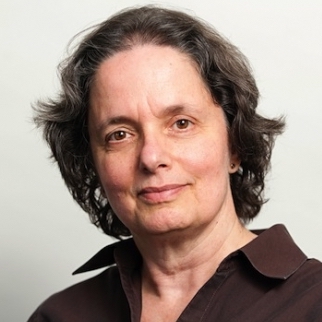When architect Frank Gehry turned 75 some five years ago, he was hugely famous, much in demand and aware that even beyond his prolific output, his legacy needed some explanation. So he started thinking about how to go about preserving his thoughts. Because he is always generous in spirit and open about his process, his retrospection led to not one, but two major works, both very accessible to the lay lover of architecture: Sydney Pollock’s “Sketches of Frank Gehry,” a critically acclaimed 2005 documentary, and now L.A. author Barbara Isenberg’s just-released “Conversations With Frank Gehry” (Knopf).
Isenberg, a former arts writer for the Los Angeles Times, has written two previous books, “State of the Arts: California Artists Talk About Their Work” (William Morrow, 2000) and “Making It Big, The Diary of a Broadway Musical” (Limelight Editions, 1996). Beginning in the 1980s, she wrote frequently about Gehry’s various projects, so in 2004, when he asked her to help him organize his thoughts for an oral history, she proposed a book in question-and-answer format, using an extended series of new interviews. From 2004 to February 2008, the two sat down together repeatedly in his firm’s Santa Monica offices to draw him out on all aspects of his life and work, from the personal and biographical to the commissions, challenges and triumphs of his professional career. These include, in some detail, the exuberance he felt at getting the commission to design a new home for the Los Angeles Philharmonic — Walt Disney Concert Hall — his despair when the building almost didn’t get built, and his exuberance again once the building finally opened in 2003. Isenberg’s friendly yet astute prodding is always evident in her questions, which get Gehry to reveal himself.
Isenberg’s own interest, she said, lies in the artist’s creative process, not just facts and anecdotes. We learn, for example, that his grandfather was a talmudic scholar, a legacy he passed on to young Frank Goldberg (Gehry’s birth name). Although love of Jewish text study didn’t exactly stick in content — Gehry is a secular Jew — it did profoundly affect his process, because, as the architect says, learning Talmud “created a pattern of curiosity which has done well for me.”
Gehry also reveals surprising aspects of himself, such as that he still won’t allow himself to wish for something, because he’s “superstitious.”
“There’s something preventing me from yearning for a project,” Gehry says in the book. “I guess I don’t like the disappointment. I could say I want to do an airport, because I like flying…. It’s a complicated mechanism, and I think I could do something interesting. But between wanting to do it and getting a commission, there are a lot of hoops you need to jump through and so I sort of wait.”
You’d think Gehry — probably the most beloved and among the most sought-after architects in the world — would get whatever he wants, but architecture is a tough business, involving millions of dollars, complex land-use issues and even political ambitions, so over the years he has seen many projects disintegrate before being built. One of the sources of his success stems from collaborative relationships with his clients. Despite the distinctive authority of his style, he repeatedly describes how he likes to remain open to suggestions.
In a conversation with Isenberg at the Getty Center recently, he shared this part of his process with a sold-out audience: “Once I agree to do something, I have to like the people and be interested in the topic. If I didn’t, I’d probably repeat myself. It’s a teaching thing, and I like that. And in the end, sometimes they [the clients] even think they designed it.”
What also shines through is his open and kind heart. What he is not, Gehry insisted with a laugh at the Getty chat, is the prima donna architect portrayed in Matt Groening’s “The Simpsons.”
“There’s a perception that I just crumble up a piece of paper and that’s the building,” he said. Indeed, that is exactly what the cartoon Gehry does in the 2005 episode, which the architect voiced himself. It was a tough task, Gehry said, and his telling of the experience says much about this highly driven, somewhat ambivalent master:
“I had to say, after the crumpled paper hit the floor, ‘You’re a genius, Frank Gehry,’ and they had to really coach me on that, because I was having trouble admitting it.”





















 More news and opinions than at a Shabbat dinner, right in your inbox.
More news and opinions than at a Shabbat dinner, right in your inbox.